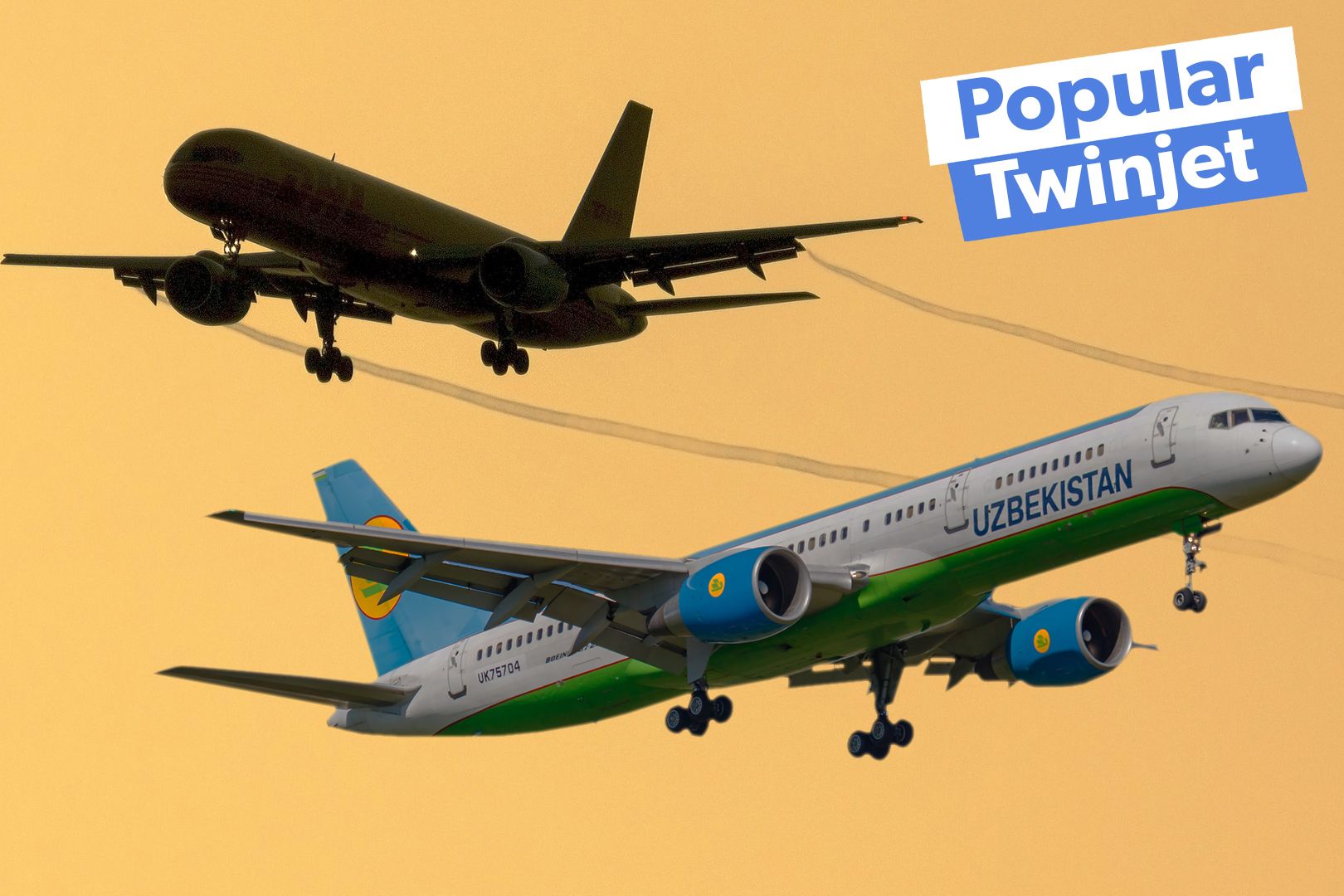On February 19th, 1982, the Boeing 757 took to the skies for the first time. This came a week earlier than planned, and while the test aircraft encountered certain issues, the type became an FAA-certified airliner by the end of that year. The 757 went on to become one of the workhorses of commercial aviation, proving popular with carriers around the world.
How did the aircraft come to be, and what are some key moments in its history? Developed to succeed the 727 By the time the 757 came about, Boeing was already an established narrowbody manufacturer. Alongside the famous 737, it had enjoyed particular commercial success with the three-engined 727 series, selling over 1,800 examples. As Key Aero notes, the company wanted to build on this success with a larger 727-300.

More than 500 Boeing 757s are still actively flying. However, due to a lack of interest in this stretched trijet, and following consultation with potential customers in the narrowbody market, Boeing instead opted to succeed the 727 with a brand-new design. Initially designated as the 7N7, the US manufacturing juggernaut wanted this aircraft to offer considerably better operational efficiency than its predecessor.
With this in mind, the new aircraft, whose name was eventually changed to the 757, was built with just two wing-mounted engines. This contrasted to the three-engined wing-mounted approach seen on the 727, but ultimately worked a treat. Indeed, Boeing notes that " the 757 was up to 80% more fuel efficient than the older 727 jetliners it was designed to replace, but retained the 727's short-field capability .
" Love aviation history ? Discover more of our stories here! Decades of service Following the aforementioned first flight in February 1982, the Boeing 757 received certification from the Federal Aviation Administration (FAA) that December. A month later, in January 1983, it entered revenue-earning service with Eastern Air Lines, and quickly proved a hit with its operators. The aircraft's first commercial service was from Atlanta (ATL) to Tampa (TPA).
A key advantage over the 727 was the fact that, with a glass cockpit, only two flight deck crew were required, with the elimination of flight engineers saving money. Over in Europe, British Airways was another early operator, launching services just one month after Eastern Air Lines in February 1983. The carrier's first flight with the 757 was on its London Heathrow (LHR) to Belfast (BHD) shuttle services.
The UK flag carrier's relationship with the 757 ultimately lasted from 1983 until 2010. Just a few years into the Boeing 757's service life, its use became much more diverse with the advent of Extended-range Twin-engine Operations Performance Standards (ETOPS). This allowed it to be used on long-haul routes over open water, such as the transatlantic corridor, thus further increasing its operational versatility.
Boeing delivered 1,049 production 757s, with the last delivery occurring in 2004. According to the Aviation Safety Network , just 13 of these (1.24%) have suffered hull losses.
The aircraft's first hull loss occurred in October 1990, when a hijacked Boeing 737 belonging to Xiamen Airlines collided with a China Southern Airlines 757 on the runway at Guangzhou Baiyun International Airport (CAN), killing 46 of the 122 people onboard. Other high-profile incidents include: American Airlines Flight 965, which crashed into a mountain in Colombia while en route from Miami (MIA) to Cali (CLO). Of the 155 passengers and crew onboard, only four passengers survived.
Birgenair Flight 301, which crashed shortly after take-off from Puerto Plata's Gregorio Luperón International Airport (POP) in the Dominican Republic, bound for Frankfurt (FRA), via Gander (YQX). All 189 people onboard were killed. Two Boeing 757s were also hijacked in the 9/11 terrorist attack (American Airlines Flight 77 and United Airlines Flight 93).
Multiple different variants The primary production variant of the Boeing 757 was the passenger-carrying 757-200, which, according to Boeing's data, accounted for 913 of the type's 1,049 commercial deliveries. The US manufacturer also produced a dedicated freighter version known as the 757-200PF, which racked up a grand total of 80 sales. Less numerous was the stretched-fuselage 757-300.
This was over seven meters longer (54.4 meters compared to 47.3 for the 757-200), raising its exit limit from 239 to 295 passengers.
Finally, Boeing also produced a single example of the mixed-use 757-200M Combi model, which flew for Nepal Airlines. Major operators of the Boeing 757 The largest US carriers to operate the Boeing 757 were American Airlines and Delta Air Lines, both of which counted more than 100 of the type in their fleets. Although American Airlines has since retired its 757 fleet, Delta Air Lines still operates more than 120 of the type.
Other major operators of the 757 throughout history include: Northwest Airlines US Airways Iberia Air 2000 avianca Air Europa Canada 3000 Airlines. The airport has over 150 daily 757 departures in August. Despite more and more Boeing 757s being retired across the world, the aircraft is the second most widely used narrowbody aircraft across the Atlantic in summer 2024, after the Airbus A321.
Icelandair, Delta Air Lines, and United Airlines all deploy the 757 on various transatlantic routes, including Keflavik (KEF) to Denver (DEN), Chicago (ORD) to Edinburgh (EDI), and New York (JFK) to Shannon (SNN). Transatlantic single-aisle flights have risen by 12% versus the pre-pandemic, but obviously not because of the 757..



















